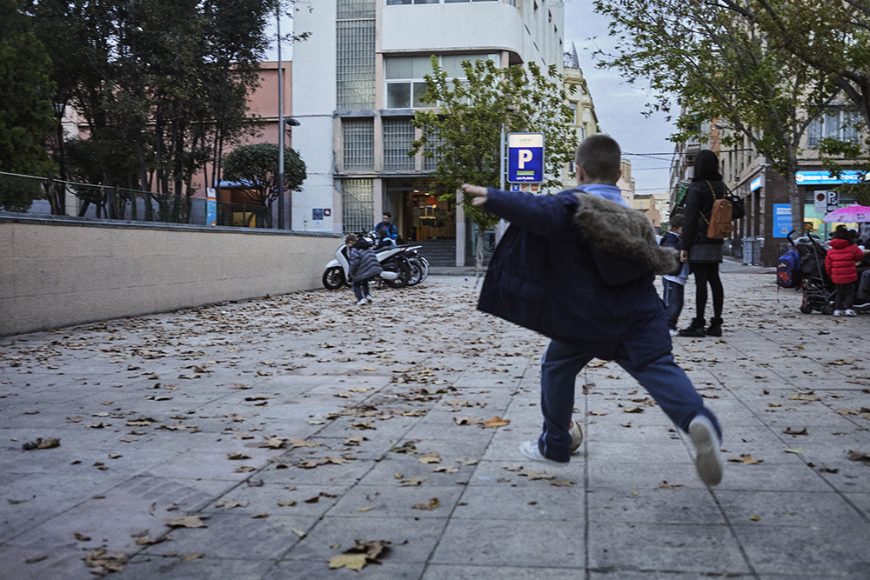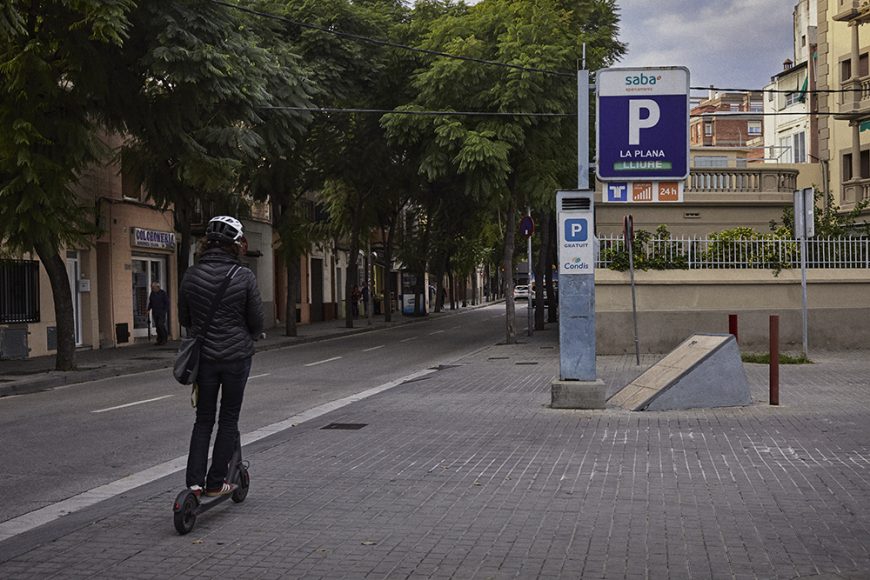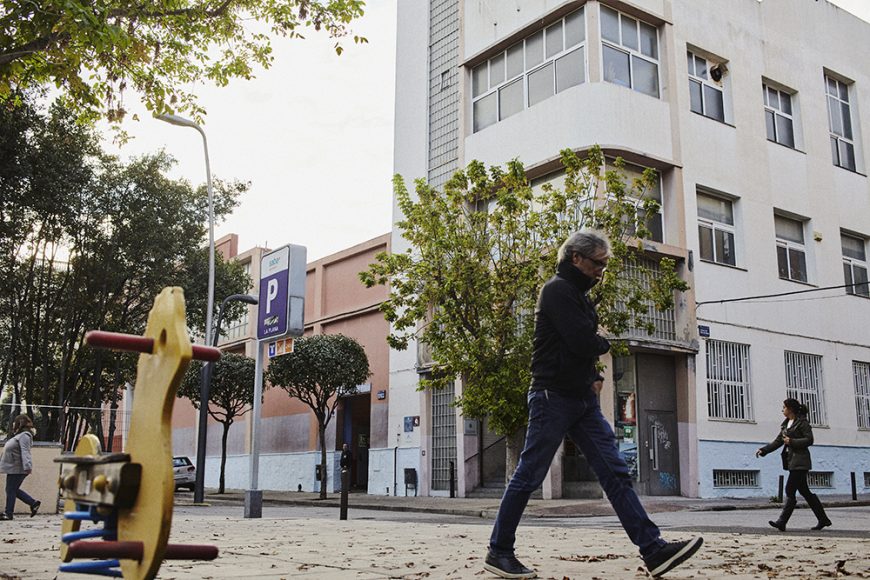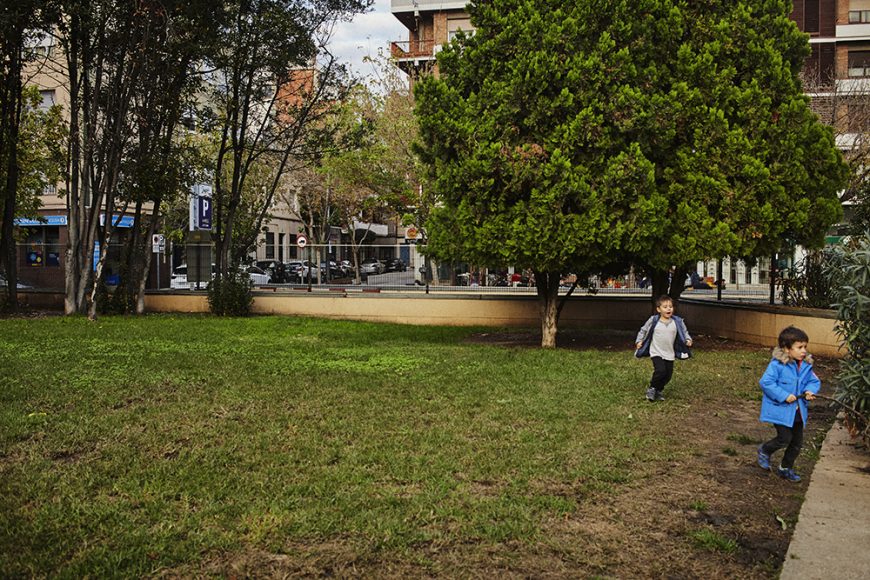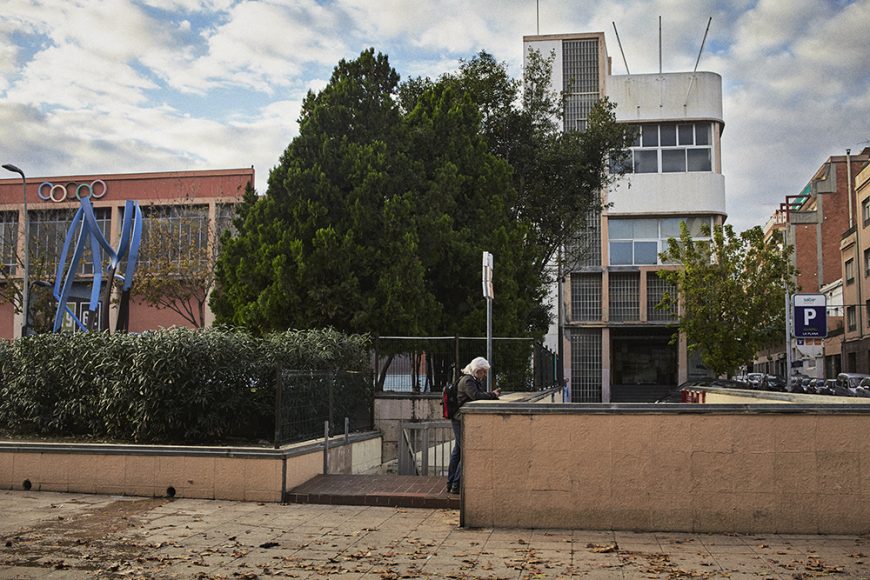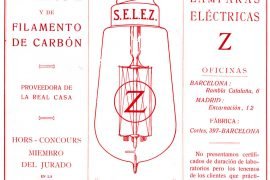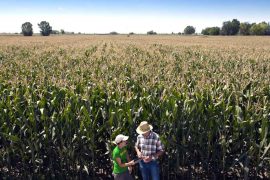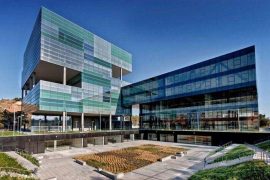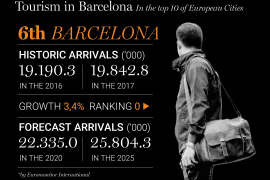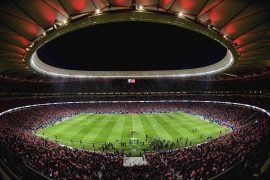[dropcap letter=”I”]
f an extraterrestrial were to drop in to the Plaça de la Plana in Badalona, three things would draw its attention. Well, when I say extraterrestrial it is to make use of that spent resource of alien life, but at this time I realize it no longer makes sense. Especially when every day we find, parsimoniously, that the aliens are amongst us, they pass as normal and they work, commonplace, at the market. In fact, it is usually those who shout loudest and thus go most unnoticed, because what is needed to disguise oneself, is to shout out loud. So it is best if I start over again: if anyone who has never set foot in Badalona—or has done so only in anomalous circumstances such as a funeral or a poetry recital—comes to La Plana, which is what this square is popularly called, they will be drawn to three elements: the ageing sports centre, the ample size of the square, and the monument, to what it is not clear, but which in the face of doubt is likely a monument to the traditional Catalan dance, the sardana.
The chronicles say that this square was not built up until after the Civil War, and in 1979 it left behind the Franco-era name to recover the popular moniker of La Plana, that the basketball court was opened in 1948 and was covered 14 years later…
Let us begin with the monument. In this country, when a monument has an intricate structure—four strips of iron that stretch out in no particular direction—and there is no way of resolving what it commemorates, then it is a monument to the sardana. And I point out that this commentary does not come because I dislike the sculpture in La Plana. On the contrary: what called my attention was the freedom with which some iron ribbons rose and contorted upwards into the sky and the turquoise blue that coloured them from the middle upward, so a bit arbitrarily, and that it seemed to go with the blue door of the sports centre. But it just so happened that I did not know that it was a monument to the sardana—I had not noticed the small plaque at one end of the base of the sculpture, I did not dare to step on the grass to approach it… bah, just a chronicler’s excuses. Then, when I came home, all the fabulations I had imagined so as to unravel the metaphysical sense of the whole square went to the dogs thanks to a quiet search on the Internet, which told me that this is a square with a history. The monument is the work of Esther Albardané, an artist with works of renown in Italy and Japan, and was erected in 1988 when Badalona was the Ciutat Pubilla de la Sardana, that year’s capital of the sardana.
The surge of nostalgia grows as I discover that this sports centre was the first court the Penya—the Joventut de Badalona pro team—played in, and the first covered basketball court in Spain. Now I’m so sorry I did not kneel
The chronicles say that this square was not built up until after the Civil War, and in 1979 it left behind the Franco-era name to recover the popular moniker of La Plana; that the basketball court was opened in 1948 and was covered 14 years later… Hey, wait a minute—basketball. When I went to look at the square, I did not want to avoid the impulse of turning my head to the court—I was more interested in that than in the irons. The outside of the sports centre looked to the aesthetics of decades ago: Olympic rings, of a deep red garnet colour, at the top of the façade, with a door and the turquoise blue skirting, like the monument to the sardana. To me, this swaddling teleported me to the basketball courts of twenty or thirty years ago. At that time, a skinny girl who looked like she might be blown over by a gust of wind grabbed the ball, had a fill of bouncing it all the while looking at the ground, as all kids do when they start playing basketball—and the rest of the nine girls swarming around the ball, going up and down the court, and would be lucky if they scored a basket. And then the ball would go out of control with a group of four or five stretched out on the floor, grappling until the referee would call a jump ball. And one of the girls—that might be me—put her hand on her knee, with a little burn because of the forced landing on the court flooring.
The surge of nostalgia grows as I discover that this sports centre was the first court the Penya—the Joventut de Badalona pro team—played in, and the first covered basketball court in Spain. Now I’m so sorry I did not kneel. But what I did do was go around it, following the whole perimeter of the square, and entranced by the kids playing in the playground. There is a smaller ground to the left and a larger one on the right, facing the sea. In the larger one there are three lanky boys, well on the way to adolescence. They do not know it yet, but in just a few days they will stop coming. Today they are still there and they spend their time to shouting and showing the rest how strong they are, hanging from the play-structure a few seconds, and let’s see who holds on the longest. Behind one lumbering boy, a wimpy one tries to imitate him. It is really curious how, even at a young age, when they have not yet left the playground, mimesis kicks in, the impulse to try to impress the others and—in some cases—revealing the disco doorman they have inside. The three pre-teens contrast with the girls who are lying under the structure, who seem to be chatting about their things, blind—still, luckily—to the squabbling and bragging they will one day learn of as they grow up, when they will learn who the real aliens are.

